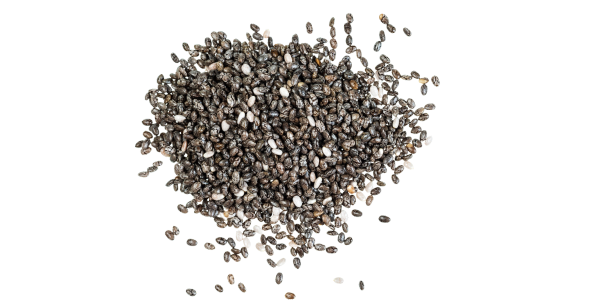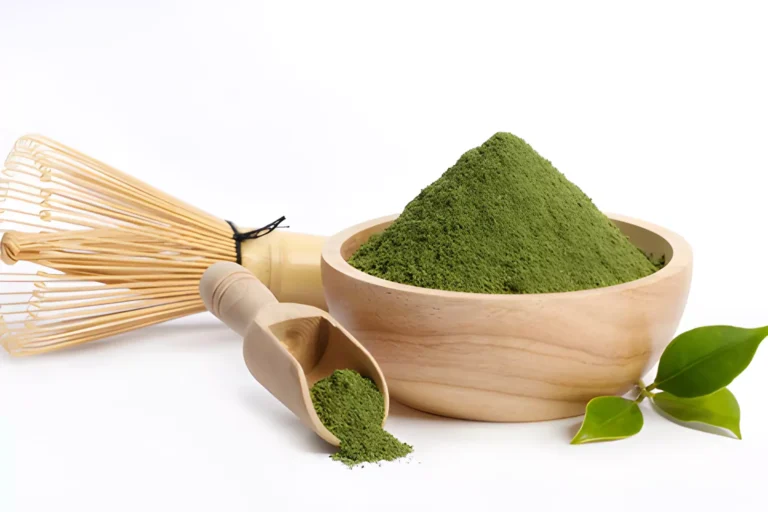White vs Black Chia Seeds – What’s The Difference?
Chia seeds are tiny, edible seeds from a plant called Salvia hispanica, which is native to Mexico and Guatemala. They have been used for centuries by the Aztecs and Mayans as a source of energy and nutrition. Chia seeds are rich in fiber, protein, omega-3 fatty acids, antioxidants, and minerals such as calcium, magnesium, iron, and zinc. They can help with weight loss, blood sugar control, heart health, digestion, and more.
But did you know that there are different types of chia seeds? You may have seen white, black, or even brown chia seeds in the market or online. What is the difference between white and black chia seeds? Are there any nutritionally different between the two seeds? Or do they taste different? Well, in this article, we will cover white vs black chia seeds in detail and answer every question you have.
What are Chia Seeds?
Chia seeds are a nutrient-rich food high in fiber, protein, and omega-3 fatty acids. They are also a good source of antioxidants and minerals. Chia seeds have been shown to have many health benefits, including:
- Weight loss: Chia seeds can help with weight loss by promoting satiety and reducing appetite.
- Blood sugar control: Chia seeds can help to improve blood sugar control by slowing down the absorption of carbohydrates.
- Heart health: Chia seeds can help to improve heart health by reducing cholesterol levels and blood pressure.
- Digestive health: Chia seeds are high in fiber, which can help to improve digestive health.
- Skin health: Chia seeds are rich in antioxidants, which can help to improve skin health.
Different Types of Chia Seeds: White, Black, and Brown
There are three main types of chia seeds: white, black, and brown. Black chia seeds are the most common type and are the most widely available. They have a slightly nutty flavor and a crunchy texture. White chia seeds are less common and are more expensive than black chia seeds. They have a milder flavor and a softer texture. Brown chia seeds are the least common and are immature black chia seeds. They have a similar flavor and texture to black chia seeds.

Health Benefits of Chia Seeds
Chia seeds are a nutrient-rich food that has several health benefits. As mentioned above, chia seeds are high in fiber, protein, omega-3, antioxidants, and minerals. They have been shown to help with weight loss, blood sugar control, heart health, digestive health, and skin health.
What is the Difference Between Black and White Chia Seeds?
The main difference between black and white chia seeds is their color, determined by their seed coat. The seed coat is the outer layer of the seed that protects it from environmental factors and insects. The color of the seed coat depends on the genetic makeup of the plant and the environmental conditions where it grows.
Black chia seeds come from plants that have purple or blue flowers, whereas white chia seeds are produced by plants that have white flowers. There is also a hybrid variety with white and black chia seeds on the same plant.
The color of the chia seeds does not affect their nutritional value or taste. Both black and white chia seeds have similar nutritional composition and provide the same health benefits. They also have a mild, nutty flavor, complementing any dish or drink.
Are White and Black Chia Seeds Nutritionally Different?
There is very little nutritional difference between black and white chia seeds. Both seeds are high in fiber, protein, omega-3, antioxidants, and minerals. However, there are slight differences in the amounts of certain nutrients in each type of seed. For example, white chia seeds have slightly more fiber than black chia seeds, while black chia seeds have slightly more protein than white chia seeds.
According to the USDA National Nutrient Database, one ounce (28 grams) of dried chia seeds contains:
- Calories: 138
- Fat: 9 grams (of which 5 grams are omega-3 fatty acids)
- Protein: 5 grams
- Carbohydrates: 12 grams (of which 10 grams are fiber)
- Calcium: 179 milligrams (18% of the Daily Value)
- Magnesium: 95 milligrams (24% of the Daily Value)
- Iron: 2 milligrams (11% of the Daily Value)
- Zinc: 1 milligram (7% of the Daily Value)
- Vitamin E: 0.5 milligrams (3% of the Daily Value)
Do Black and White Chia Seeds Taste Different?
No, black and white chia seeds do not taste different. They have a mild, nutty flavor, complementing any dish or drink. Chia seeds do not have a solid or distinctive taste, but they can absorb the flavors of whatever they are mixed with.
Chia seeds can be used in various ways to add nutrition and texture to our food. They can be eaten raw or cooked, whole or ground, soaked or dry. Here are some examples of how to use chia seeds:
- Raw: Chia seeds can be sprinkled on top of salads, yogurt, oatmeal, cereal, smoothies, or any other food for a crunchy boost of fiber and omega-3s.
- Cooked: Chia seeds can be added to soups, stews, sauces, casseroles, muffins, breads, pancakes, waffles, or other baked goods for extra moisture and binding power.
- Ground: Chia seeds can be ground into a fine powder as a flour substitute for gluten-free or low-carb baking. Chia flour can also thicken sauces, soups, or gravies without adding calories or affecting the flavor.
- Soaked: Chia seeds can be soaked in water, milk, juice, or any other liquid for at least 10 minutes to form a gel-like substance that can be used as a vegan egg substitute, a pudding base, a jam or jelly, or a drink. Chia gel can also be added to smoothies, oatmeal, yogurt, or other food for extra hydration and nutrition.
So Why Are White Chia Seeds More Expensive?
White chia seeds are more expensive than black ones because they are less common and more difficult to produce. White chia seeds are also produced in smaller quantities than black chia seeds.
Another factor influencing the price of white chia seeds is their perceived quality and purity. Some consumers may prefer white chia seeds over black ones because they look cleaner, fresher, or more appealing. They may also associate white chia seeds with higher quality or premium products, such as white chocolate or tea. These preferences may create a higher demand and willingness to pay for white chia seeds, increasing their price.
Conclusion
Both black and white chia seeds are nutritious and healthy foods. There is no significant difference between the two regarding health benefits, but slight differences in taste and texture. White chia seeds are slightly more expensive than black chia seeds, but they are still a good value for your money.
Ultimately, the best type of chia seeds for you is the type that you prefer, the taste and texture. If you are looking for the most affordable option, black chia seeds are the way to go. If you are willing to pay more for a slightly milder flavor and softer texture, then white chia seeds may be a better choice for you.




